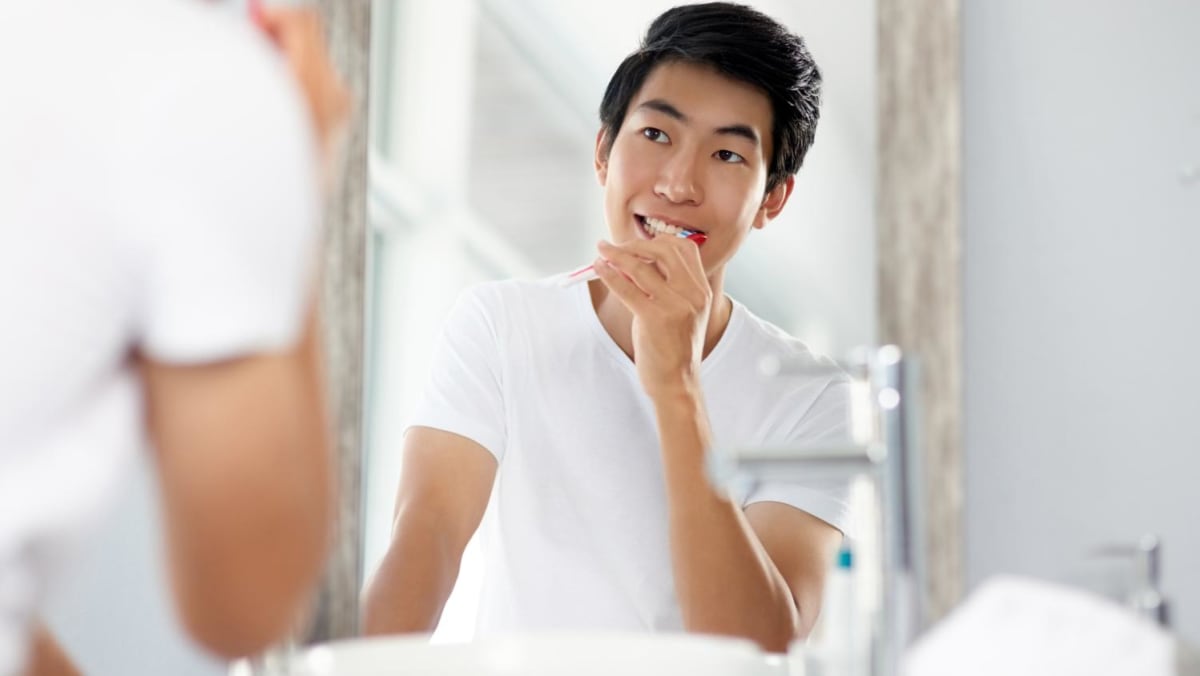The secret to healthy teeth and gums isn’t much of a secret: Brush twice a day, floss once a day and visit a dentist regularly for cleanings.
“It’s not sexy or surprising, but this is what works if you want to avoid cavities and gum disease,” said Dr Matthew Messina, a clinical director and assistant professor at Ohio State University College of Dentistry.
But dentists say there’s more we could be doing in the name of oral health. Here are some good and bad habits they suggest starting – or stopping.
BAD HABIT: USING A TOOTHBRUSH OR TOOTHPASTE THAT CONTAINS CHARCOAL
Charcoal-infused brushes and toothpastes can be effective at whitening teeth, but the benefits come at a cost.
“Charcoal is incredibly abrasive,” Dr Messina said. “It whitens your teeth by sanding away the outer layer of tooth enamel.”
Enamel is the hard, crystalline tissue that covers and protects your teeth. While removing a little enamel can have a temporary whitening effect, over time, that lost enamel will weaken your teeth and can lead to staining, cracks, cavities and other problems.
“The body doesn’t make more tooth enamel, so anything we do that wears it away is a bad idea,” he said.
GOOD HABIT: BRUSHING GENTLY, WITH A SOFT BRUSH
Using a hard-bristled toothbrush and brushing forcefully can wear away enamel as well, and can lead to gum recession and tooth lesions.
“People in general tend to brush too hard, and that can hurt your teeth and gums,” said Dr Natalie Peterson, a clinical associate professor at the University of Minnesota School of Dentistry. “If your brush bristles are spread out or splayed while you brush, you’re pressing too hard.”
Instead, brush lightly with a soft-bristled toothbrush and try holding it like you would a pen, “as it is harder to exert too much pressure holding it that way,” she said.
If you’re finding it difficult to remember to brush gently, Dr Peterson said switching to an electric toothbrush can be helpful:“Many of them will alert you if you use too much pressure.”
BAD HABIT: DRINKING SPORTS DRINKS, SODA AND FLAVOURED COFFEE
We’ve all heard that sugar “rots your teeth.” More precisely, researchers have found that sugary foods and beverages support the kinds of mouth bacteria that cause tooth decay and gum disease.
Acidic foods and drinks are also damaging. “Acid erodes tooth enamel, and so over time can cause quite a lot of destruction,” said Dr Frank Scannapieco, chair of oral biology at the University at Buffalo School of Dental Medicine.
Sports drinks, energy drinks and soda all tend to be high in both acid and sugar – a double whammy for teeth. “Even sugar-free sodas have high acid levels,” Dr Scannapieco said. “If you have one of these drinks a day, that’s not going to be a big problem, but drinking these throughout the day will greatly increase your risk for tooth erosion.”
Flavored coffee drinks are another sneaky but significant source of acids (from the coffee) and sugar (from the sweet additions).
“We often have patients where we are trying to figure out where their cavities are coming from, and it often turns out to be from flavoured coffees,” Dr Peterson said. “Those caramel macchiatos or whatever sometimes contain even more sugar than soda.”
GOOD HABIT: SWISHING WITH WATER
Rinsing your mouth with water immediately after eating or drinking can help neutralise acidity, remove residual sugar and clear away the kinds of bacteria that cause cavities and bad breath.
“Especially if you’ve been eating or drinking something sweet or acidic, swishing with water afterward will be beneficial,” Dr Messina said. “Something that simple can help neutralise any damage.”
GOOD HABIT: POSTPONING POST-MEAL BRUSHING
Brushing enamel that has been temporarily softened by acids and sugars can wear it away, Dr Messina explained.
“If you can wait 30 minutes after eating or drinking before brushing, that’s better for your teeth,” he said.
During that period, the tooth enamel will “remineralise” as the acid loses its effect, he explained. “But the bacteria stay around unless we remove them by brushing and flossing.”
BAD HABIT: USING TOOTHPICKS
“Habitual tooth picking – whether with a fingernail or wood toothpicks – can lead to injury to the gums between the teeth, gum abscesses, sensitive teeth or abrasion of the teeth,” Dr Scannapieco said.
If you feel the need to pick, he recommended cleaning between the teeth with interdental brushes. They’re safe and effective – perhaps even more effective than floss, he said. Some of his research has also found that these brushes cause less gum irritation than floss.
BAD HABIT: USING YOUR TEETH AS TOOLS
“I see people who have used their teeth to bite off the little plastic price tag holders on clothing, or to tear open packaging,” Dr Messina said.
Tooth enamel is very strong when compressed, like during biting or chewing, he said, but it is not nearly as strong when it’s bent or flexed.
“Pulling on a plastic tab bends the tooth and the enamel can break or chip,” he said. “I see this damage on front teeth all the time.”
By Markham Heid © The New York Times Company
The article originally appeared in The New York Times.

